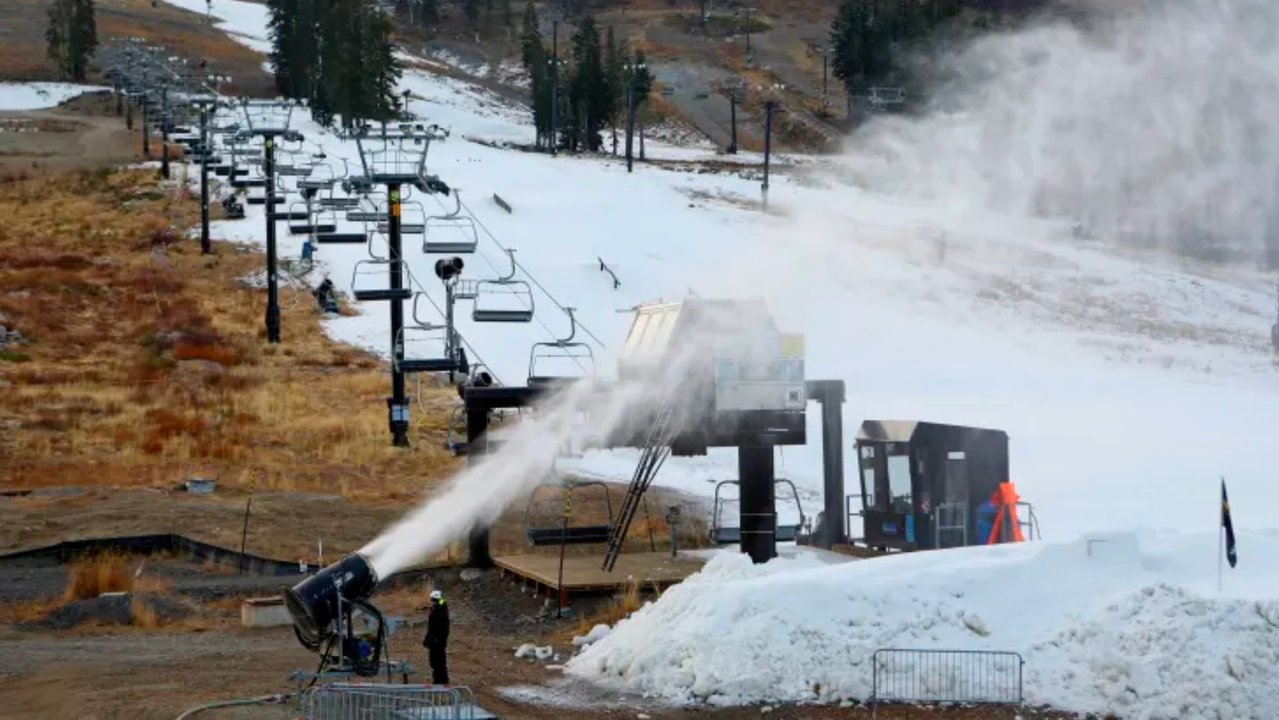The German Bundestag (German Parliament) Tourism Committee recently accepted submissions from both ski resorts and experts which ultimately painted a damning picture of the future of wintersports in the country, and in Europe as a whole. Germany has a mulitude of low lying resorts, which have struggled with snow for many years. With winter 22/23 being a difficult snow year in Europe, particularly during the beginning and middle of the season when low lying resorts (under 1000m/3300ft) are typically able to operate, the question of their future has been brought to parliament.
While the resorts argued the importance of winter sports to their regions and populations, scientific submissions suggested that even the idea that resorts over 1000m could be "snowsafe" was clearly insufficient, let alone trying to keep those lower down in business. In particular, Prof. Carmen de Jong, of University of Strasbourg, argues that distinction is clearly insufficient, and that even at higher altitudes up to 1700m, a reevaluation needs to be undertaken due to the effects of global warming.
"Traditional snowmaking techniques are no longer reliable, and the length of snow cover has significantly decreased in recent decades."
Val D'Isere, France, Europes highest resort with a base at 2400m has had to postpone its opening more and more frequently in recent years. Other high altitude areas including Sölden in Austria & Zermatt in Switzerland have struggled to open slopes at times, despite widespread snowmaking. Since the 1970s, the average length of snow cover in the Swiss Alps has been reduced by a terrifying 6 weeks. Even glacier resorts are struggling and attempts to maintain them are contributing to even more rapid glacial decline. In order to cope with the drastic retreat of the glaciers, snow is also removed from the glacier feeding area and transported in front of the glacier tongue with dozens of diesel-powered snow groomers as a cover for the increasingly long, artificially created ramps between the lift valley station and the retreating end of the glacier to make them skiable.
In the Harz Mountains of Germany, snowmaking with vast reservoirs has only been able to extend the season two weeks on average. The Vosges region in France has already ceased to invest in any winter sports related infrastructure due to the perception that it's a poor long term investment. Perhaps most damning for attempts to slow the inevitable closure of ski resorts using snowmaking is the effects on the water table and water scarcity. Intensive snowmaking and slope preparation increase pressure on water and energy resources, leading to water pollution, loss of biodiversity, as well as light and air pollution. The construction of storage tanks for snowmaking water often destroys natural CO2 sinks. Water shortages and droughts further exacerbate the situation, leading to the pumping of water from distant valleys. The legal compliance of snowmaking systems and their impact on the environment are subjects of debate and potential infringement proceedings in the future... and the present. The region of South Tyrol was forced to ban all snowmaking from March 2023 because of water shortages.
Presented with these findings, the German Parliament are likely to follow regions like the Vosges and severely limit, or entirely ban, future investment in snowmaking. Ultimately, that will mean the end of the road for consistent alpine skiing in the country sooner rather than later, perhaps in an attempt to limit the environmental effects or simply because it's a bad investment. For the rest of Europe, the clock is ticking.
_
Note: Cover photo, Boreal Mtn California for display purposes only. Sources: Prof. De Jong, Snow Industry News


Comments